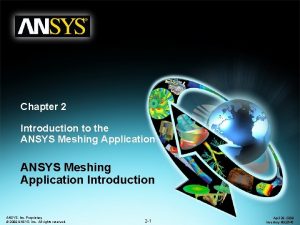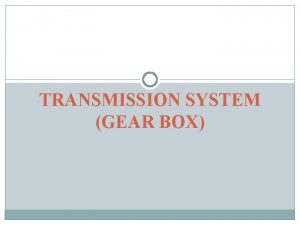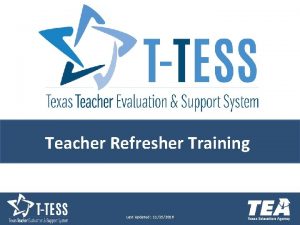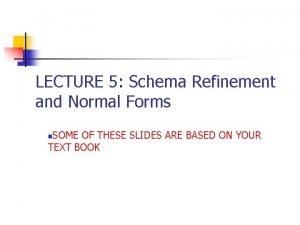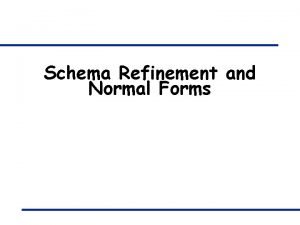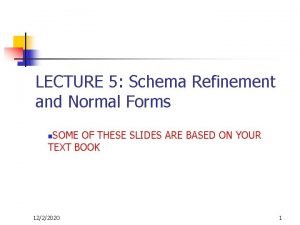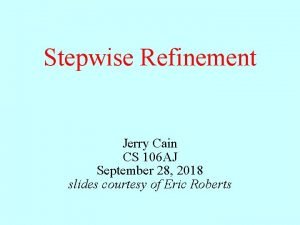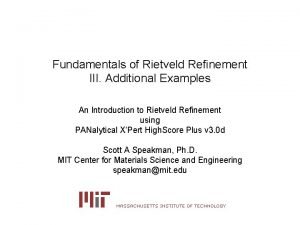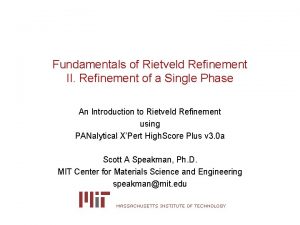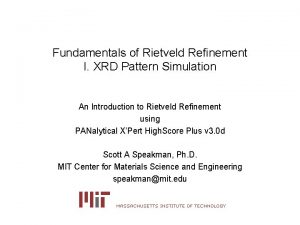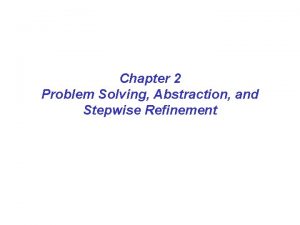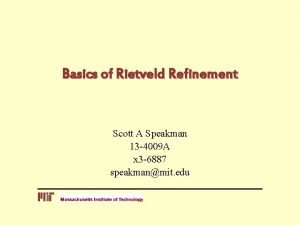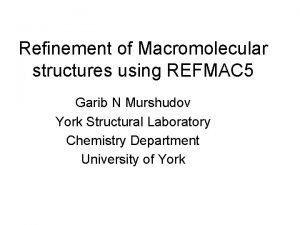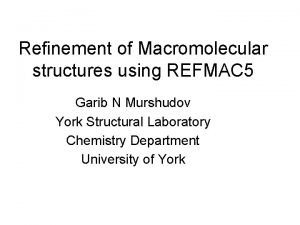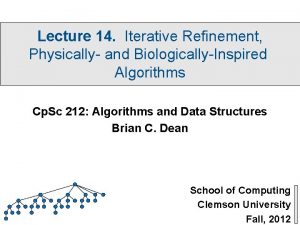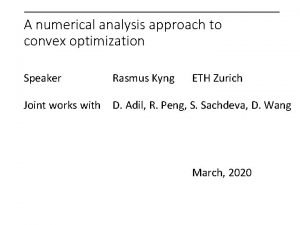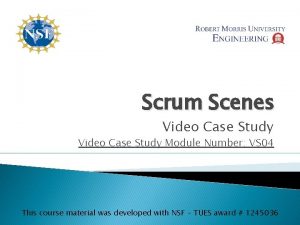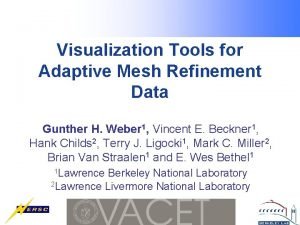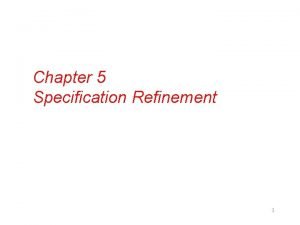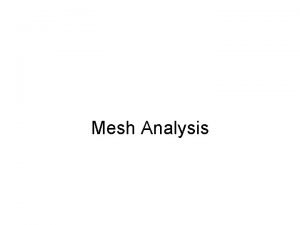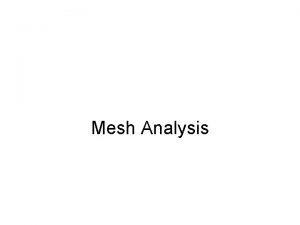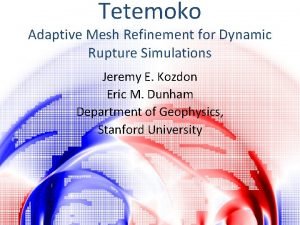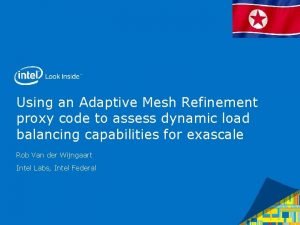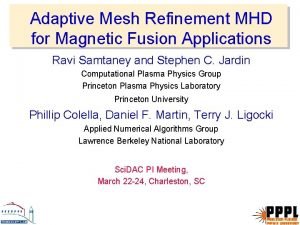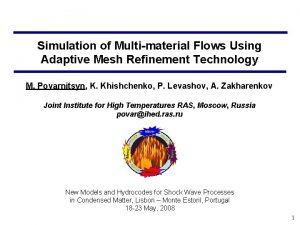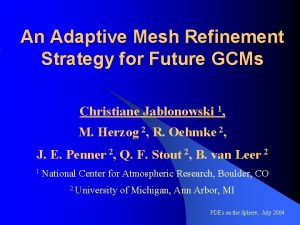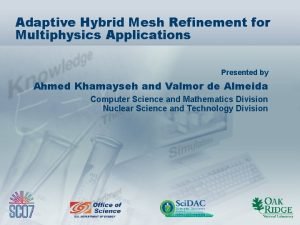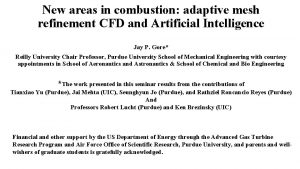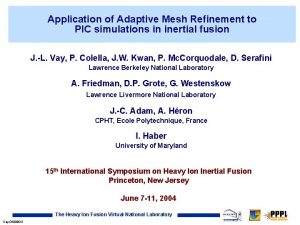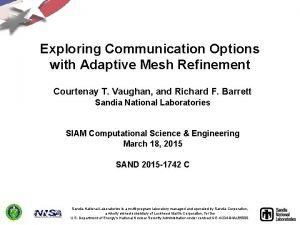Tools for applying adaptive mesh refinement and automated




















- Slides: 20

Tools for applying adaptive mesh refinement and automated tuning to wave model simulations Richard Gorman 1, Jose-Henrique Alves 2, Hilary Oliver 1 1 National Institute of Water and Atmospheric Research, New Zealand 2 SRG/EMC/NCEP/NOAA, NOAA Center for Weather and Climate Prediction, College Park, MD, USA NCEP, 30 November 2017

Wavewatch on an adaptive grid Richard Gorman

2010: Gerris (Stephane Popinet) • Adaptive mesh refinement • Quadtree grid in 2 D (octree in 3 D) • Applied to various flow problems, e. g. Navier-Stokes equations

Why adaptive mesh refinement for waves? • Wave models are computationally expensive, and computing resources aren’t infinite, • We can’t afford to have very high resolution everywhere • We need to cover full ocean basins • We can used nested rectangular grids or unstructured meshes to give higher resolution where we know in advance it is needed • With tropical cyclones, we need high spatial resolution, but don’t know in advance where it will be needed

Gerris + Wavewatch Gerris Wavewatch subroutine calls

Simulating an artificial “cyclone” • Rmax = 100 km • Vmax = ramps up from 0 to 50 m/s after 25 hours, then constant • Centre moving southward at 555 km/day. • No background wind field

Adaptive mesh (48 hours) Spatial resolution 208 km 104 km 52 km 26 km 13 km 6. 5 km The mesh is refined according to the estimated truncation error in the significant wave height field

Artificial “cyclone” simulations Computing time (hours) 100 10 gerris constant Wavewatch 1 0. 1 gerris adaptive 26 6. 5 13 Maximum spatial resolution (km)

Estimated efficiency in global models a) Sample global significant wave height field (1/9/2009 00 Z NCEP Analysis) a) the corresponding truncation error ε for a 0. 352 rectangular mesh. Logarithmic scale, ranging from ε < 1 mm (dark blue) to ε > 5 cm (dark red).

Number of cells needed in adaptive and constant grids Number of grid cells 1. Starting with the sample wave height field, we apply the refinement algorithm to meet given truncation error targets 2. Compare the number of grid cells in the resulting adaptive grid with the corresponding constantresolution grid 1 x 107 constant 1 x 106 1 x 105 1 x 104 adaptive 0. 088 0. 176 0. 352 0. 704 Equivalent resolution (degrees)

Limitations of Gerris-WW 3 • Gerris-WW 3: – uses WW 3 v 2. 22 source terms, – has limited I/O, – has no handling of ice, subgrid obstruction, reflection, … • Need to bring these features in, and keep up with other developments • Who might use/develop it? • Answer? : build adaptivity into Wavewatch

Quadtree structures • A “quad” is a square divided into four “child” quadrants • Each of these “children” can itself be a “quad”, and further subdivided, or a “leaf” cell, for which model data are computed. • A standard rectangular grid is a special case • Leaf cells correspond to WW 3 seapoint index ISEA

Inputs on a quadtree grid • Refinement level of the wave model may be controlled by inputs 1. Bathymetry 2. Wind, currents, water level • Handle inputs on independent quadtree structures • Inputs may be defined at multiple refinement levels

Test simulation : 1 st order propagation, adaptive grid Wind speed Significant wave height

Quadtree mesh 1 – refinement level

Quadtree mesh 1 – UNO 2 propagation test

Quadtree mesh 2 – refinement level

Quadtree mesh 2 – UNO 2 propagation test

Status: • Code version – Code development brought into a new branch from the EMC_ww 3 trunk • Quadtree adaptive processes – Modules for quadtree operations • I/O: – Bathymetry & obstructions from multiple regular grids – Wind, currents, levels, ice ( ← binary ← netcdf) – Restart files – Gridded outputs ( → binary → netcdf) – Point & track outputs – Input boundary conditions – Output boundary conditions

Status • MPI: coded, but needs testing • Physics: – First order spatial propagation – Higher order propagation (UNO 2, UQ) – Subgrid obstructions, including “old” ice physics – Spectral propagation – Local source terms – Reflections – Bottom scattering – Mud interactions – New ice physics
 Ansys meshing manual
Ansys meshing manual Constant mesh gear box
Constant mesh gear box Ttess triangle
Ttess triangle Schema refinement and normal forms
Schema refinement and normal forms Schema refinement and normal forms
Schema refinement and normal forms What is schema refinement
What is schema refinement Relation instance
Relation instance Stepwise refinement python
Stepwise refinement python Risk analysis in software engineering
Risk analysis in software engineering Introduction to schema refinement
Introduction to schema refinement Rietveld refinement highscore plus
Rietveld refinement highscore plus Fundamentals of rietveld refinement
Fundamentals of rietveld refinement Fundamentals of rietveld refinement
Fundamentals of rietveld refinement Refinement
Refinement Stepwise refinement java
Stepwise refinement java Rietveld refinement guidelines
Rietveld refinement guidelines Jelly body refinement
Jelly body refinement Shelxl download
Shelxl download Iterative refinement
Iterative refinement Iterative refinement
Iterative refinement Backlog refinement
Backlog refinement
